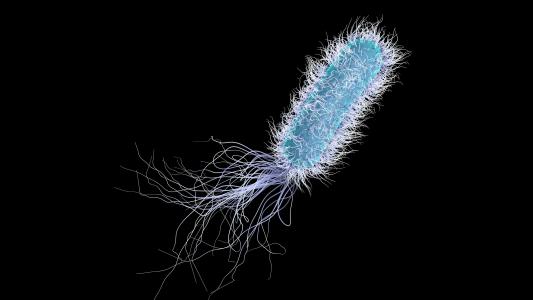Rather than playing whack-a-mole with each new problematic variant,” Anthony Fauci told James Hamblin at The Atlantic, “it just makes sense to me to use all of our capabilities to really go for a universal SARS-CoV-2 vaccine.”
A group of researchers led by University of North Carolina immunologist David Martinez have successfully vaccinated mice with a jab even better than what Fauci suggested to Hamblin: one which works against numerous coronaviruses, not just SARS-CoV-2 and its variants.
By combining pieces of multiple coronaviruses’ spike proteins into one and delivering it via mRNA, the vaccine provided protection against SARS-CoV-2, classic SARS, and two other coronaviruses.
The results “are an important step towards a pan-coronavirus vaccine,” Gladstone Institute of Virology virologist Melanie Ott, who was not involved with the study, told Howard Hughes Medical Institute (HHMI).
A universal weapon: Universal vaccines — vaccines that cover all variations of a virus, or all types of a virus — are vaccinology’s most fervent wish.
Imagine, for example, a universal flu vaccine: protection against the shape-shifting influenza in all its forms, no more annual guesses, no more mistakes. (Once considered a pipe dream, a candidate passed phase 1 trials last winter.)
SARS-CoV-2 is currently mutating faster than the flu virus, and while the vaccines still appear to work against the new variants, there are signs that the virus is evolving to escape immunity.
The LEGO antigen: To create their vaccine, Martinez and his team took three proteins out of the spikes of 4 different coronaviruses: SARS-CoV, SARS-CoV-2, and two bat coronaviruses that are able to infect human cells, but haven’t yet caused outbreaks.
“We’ve taken advantage of the fact that the spike protein of coronavirus is modular,” Martinez told HHMI. They then used these pieces to assemble a new spike protein, one not found in nature.
The resulting immune system target — called an antigen — is akin to “a LEGO minifigure with the legs of a cowboy, the torso of Spider-Man, and the helmet of an astronaut,” as HHMI so evocatively put it.
Using the same mRNA technique that powered Moderna and Pfizer’s extremely effective vaccines, the team vaccinated mice with the LEGO-like spike protein.
Universal protection: The vaccinated mice were challenged with a murderer’s row of coronaviruses, including the four viruses that the antigen was made from, plus a few others.
The antibodies created by the vaccine provided broad protection from all of the “Sarbecoviruses” that were tested — the whole group of coronaviruses that includes SARS and SARS-CoV-2.
The mice were also protected against the two bat coronaviruses, and two of SARS-CoV-2’s “variants of concern,” Alpha and Beta (originally found in Britain and South Africa).
Using the same mRNA technique as Moderna and Pfizer’s vaccines, the team vaccinated mice with the LEGO-like spike protein.
Even more promising, the vaccine created antibodies that reacted to MERS, an extremely deadly coronavirus from camels, which is not closely related to the others — a hint that a pan-coronavirus vaccine may be possible.
Mice that were vaccinated with just the SARS-CoV-2 spike protein, instead of the LEGO-like combination, were able to be infected with SARS and a bat coronavirus, Clinical OMICS reports.
The next steps: Of course, mice are not people, and there’s still work to do before human clinical trials start.
The team’s next step, still in the planning stage, will be studies on other, larger animal models (like monkeys) to test for safety and efficacy, before moving on to phase 1 trials, which may be months into the future.
Still, the need won’t go away.
“The fact that we’ve had two coronavirus epidemics in the last two decades tells us this is something that can keep happening,” Martinez said.
“We need to find ways to devise vaccines that can mitigate the threat from these viruses.”
We’d love to hear from you! If you have a comment about this article or if you have a tip for a future Freethink story, please email us at tips@freethink.com.
